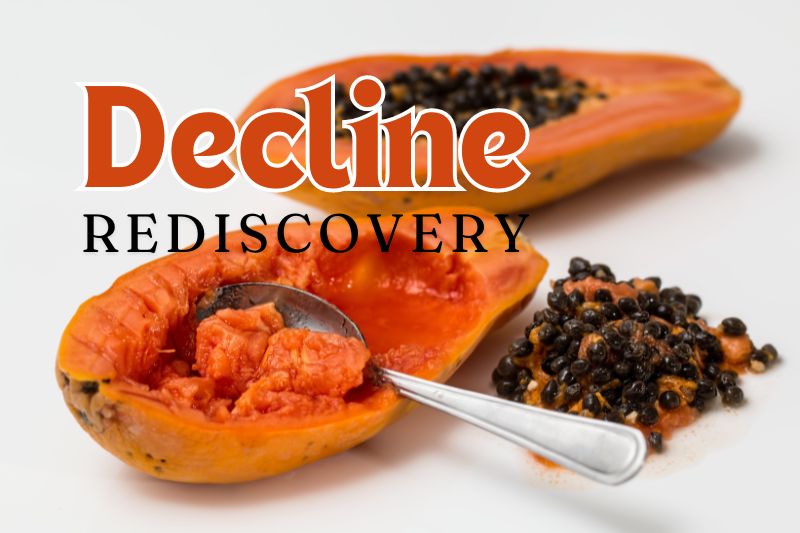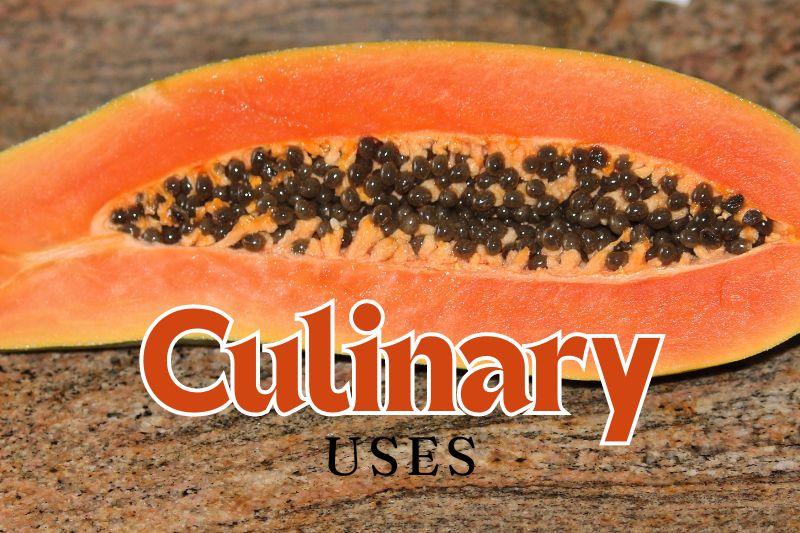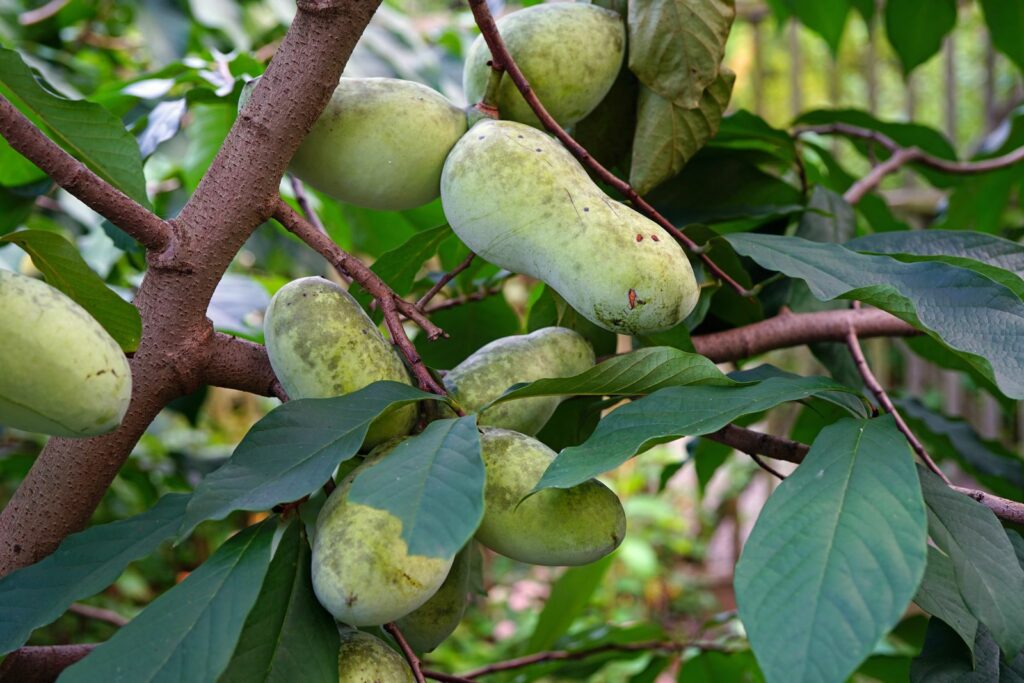Pawpaws are the largest edible fruit native to North America, belonging to the Annonaceae family, which includes tropical fruits like custard apples and soursops.
They are typically green with a yellowish hue when ripe and have a custard-like texture. The fruit contains several large, dark brown seeds and is rich in nutrients.
The flavor of pawpaw is often described as a blend of banana, mango, and melon, with a creamy texture reminiscent of custard.
Despite its tropical taste, the pawpaw is hardy and can thrive in temperate climates, making it unique among its relatives.
Pawpaw’s Decline and Rediscovery

Several factors contributed to the pawpaw’s decline. Its delicate nature and short shelf life made it unsuitable for large-scale commercial distribution.
The rise of industrial agriculture and the focus on more easily transportable fruits led to its obscurity.
Cultural shifts also played a role, as people gravitated towards more widely known and available fruits.
In recent years, efforts to reintroduce the pawpaw have gained momentum.
Neal Peterson, a prominent horticulturist, has led breeding programs to develop more resilient and flavorful pawpaw varieties.
Pawpaw festivals and enthusiasts have also played a crucial role in raising awareness and promoting the fruit’s culinary and nutritional benefits, sparking renewed interest in this forgotten gem.
Pawpaw Cultivation and Harvesting
Pawpaws thrive in rich, well-drained soil with plenty of organic matter. They prefer locations with partial shade but can also grow in full sun.
The trees are hardy and can tolerate temperatures as low as -20°F, making them suitable for a variety of climates.
Proper spacing and cross-pollination are essential for successful fruiting, as pawpaws are not self-pollinating.
Harvesting pawpaws requires a gentle touch due to their delicate nature. The fruit should be picked when it yields slightly to pressure and emits a fragrant aroma. This usually occurs from late August to October, depending on the region.
Challenges in cultivation include pest control and ensuring adequate pollination, which can be addressed through hand pollination and maintaining a healthy orchard ecosystem.
Nutritional and Health Benefits

Pawpaws are a nutritional powerhouse, offering a rich source of:
- Vitamin A
- Vitamin C
- Magnesium
- Potassium
- Dietary fiber
They are also high in antioxidants, which help combat oxidative stress and reduce the risk of chronic diseases.
The fruit’s unique combination of nutrients supports overall health and wellness, making it a valuable addition to any diet.
Emerging research suggests that pawpaws may have specific health benefits, including anti-inflammatory properties and potential anti-cancer effects.
While more studies are needed to fully understand these benefits, the existing evidence highlights the pawpaw’s potential as a functional food.
Culinary Uses

Traditionally, pawpaws were eaten fresh or used in a variety of recipes by indigenous peoples and early settlers. Modern culinary applications have expanded to include pawpaw beer, sorbet, and an array of desserts such as:
- Pies
- Custards
- Ice creams
The fruit’s unique flavor pairs well with both sweet and savory dishes, allowing chefs to experiment with innovative recipes.
Pawpaw can also be used in smoothies, baked goods, and sauces, adding a tropical twist to familiar recipes.
Its creamy texture makes it an excellent substitute for bananas in many dishes, providing a nutritious alternative that enhances the flavor and nutritional profile of meals.
Where to Find Pawpaws
Foraging for wild pawpaws can be a rewarding experience. They are commonly found in river valleys and floodplains, thriving in moist, shaded environments.
When foraging, look for clusters of trees with large, oblong leaves and check for ripe fruit in late summer to early fall.
In addition to foraging, pawpaws can be found at farmers’ markets and specialized orchards. Many orchards now cultivate pawpaws, offering fresh fruit and value-added products such as pawpaw preserves and baked goods.
Festivals dedicated to the pawpaw provide opportunities to taste and purchase the fruit, as well as learn more about its cultivation and uses.
Summary
Pawpaws are nutritionally rich fruits with a fascinating history and versatile culinary applications.
Their rediscovery offers a chance to enjoy a delicious and healthful fruit that has long been overlooked.

